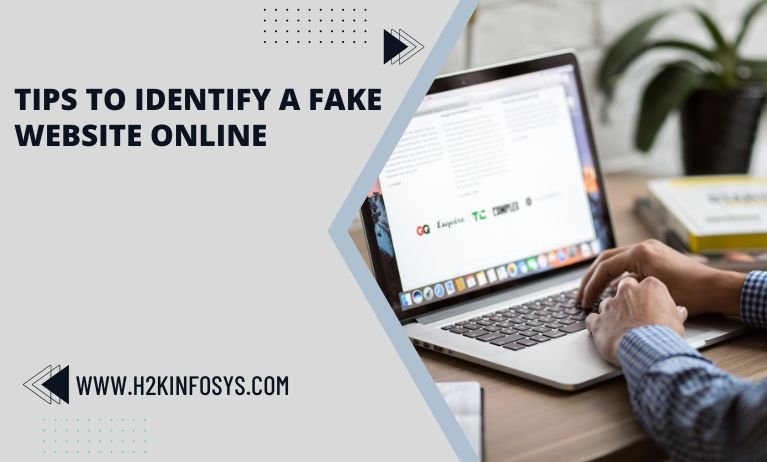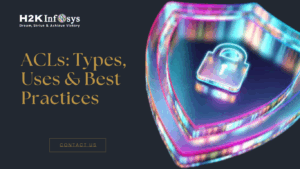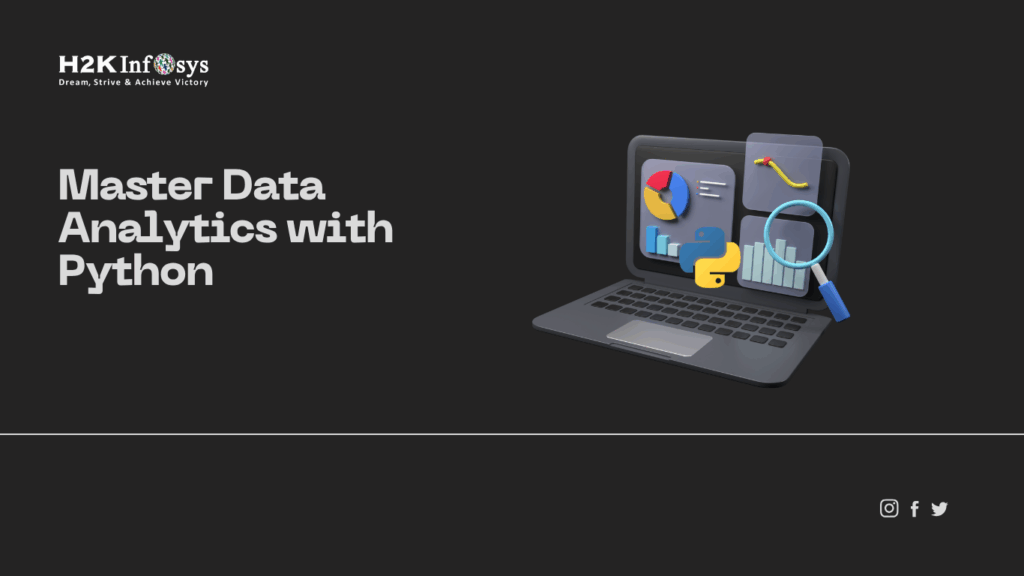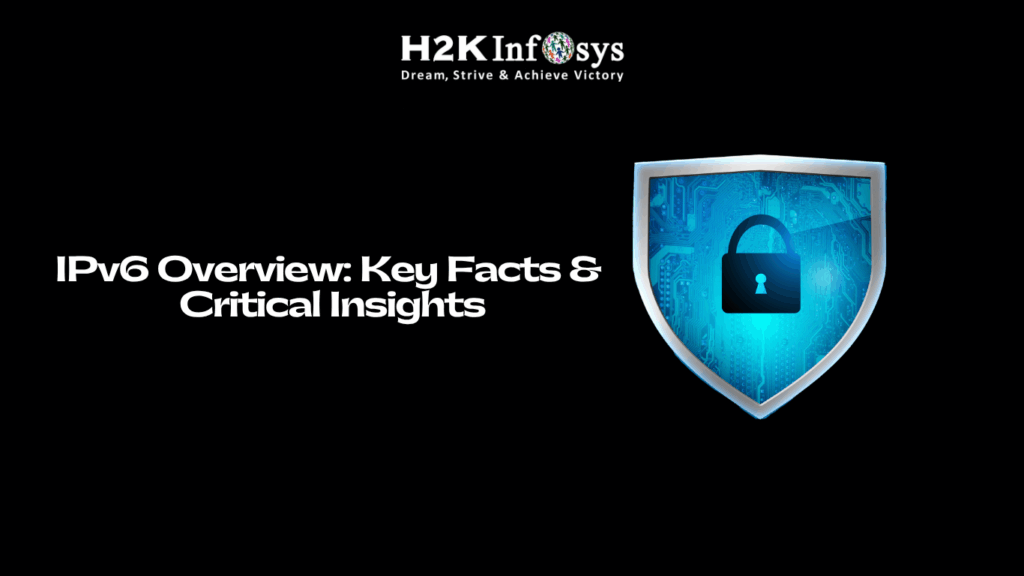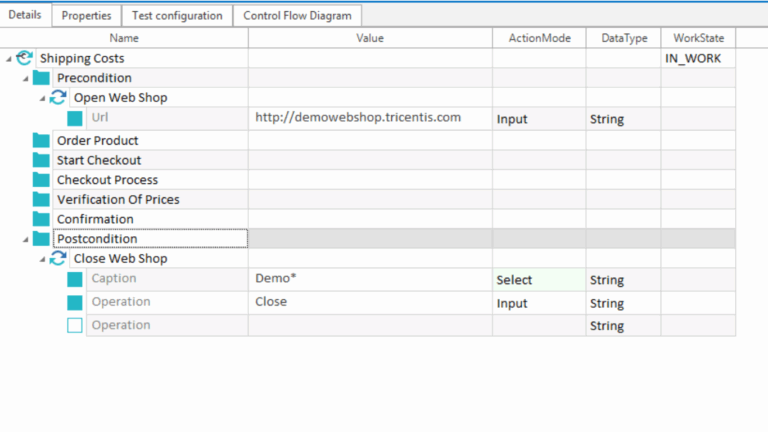Introduction
In the digital age, cybercriminals have mastered the art of creating websites that look legitimate but are designed to deceive. These fake websites trick users into giving away sensitive data, downloading malware, or making fraudulent transactions. If you’re online—whether shopping, studying, or banking—knowing tips to identify a fake website can protect your identity and finances.
At H2K Infosys, our industry-aligned Cybersecurity training and job placement programs empower learners with real-world knowledge, including how to detect and avoid online threats. In this blog, we explore essential tips to identify a fake website, backed by practical scenarios and tools taught in our Cyber Security training courses.
Why Knowing Tips to Identify a Fake Website Matters in 2025
Cybercrime is evolving rapidly, with fake websites accounting for a large share of phishing, identity theft, and financial fraud. According to recent statistics, over 1.4 million phishing sites are created each month globally.
As the need for skilled professionals rises, understanding tips to identify a fake website has become a foundational skill for anyone entering the cybersecurity domain. Our Cyber security training and placement programs make this a core focus in both beginner and advanced modules.

15 Powerful Tips to Identify a Fake Website
1. Check for HTTPS—but Don’t Rely on It Alone
A secure website should begin with HTTPS. However, don’t assume every HTTPS site is trustworthy. Tips to identify a fake website include checking for a valid SSL certificate using tools like SSL Labs.
This step is demonstrated in real-time during our Cyber security training near me simulations.
2. Scrutinize the Domain Name Closely
Fake websites often use typos or slight alterations of well-known domains. A common tip to identify a fake website is to look for strange spellings like amazzon.com or subdomains like paypal.verify-login.com.
Our hands-on Cyber security training courses teach students to trace domains and evaluate DNS authenticity.
3. Analyze Site Content Quality
Poor grammar, pixelated logos, and broken links are telltale signs. Tips to identify a fake website often involve evaluating the overall site design and content structure.
H2K Infosys courses include exercises where learners audit suspicious websites based on content quality.
4. Validate Contact Information
Fake websites typically have missing or fake contact details. A practical tip to identify a fake website is to call the number or verify the business address via a search.
These verification methods are integrated into our Cybersecurity training and job placement projects.
5. Inspect the Domain’s Registration Details
Check WHOIS data to see who owns the domain and when it was registered. Tips to identify a fake website stress avoiding newly registered domains with hidden ownership.
H2K Infosys guides learners through real WHOIS lookups in our Cyber security training labs.
6. Watch for Overly Aggressive Popups and Urgency Messages
A classic trick in fake websites is creating a sense of urgency. “Your account is blocked click now!” is a red flag. One of the best tips to identify a fake website is to remain calm and inspect the message source.
7. Be Wary of Unrealistic Offers
If the deal looks too good to be true, it probably is. Fraudsters bait users with $50 smartphones or free giveaways. A proven tip to identify a fake website is to compare pricing with legitimate vendors.
8. Check for Authentic Payment Gateways
Look at the payment page URL. Tips to identify a fake website include ensuring the payment processor is well-known and the page is encrypted (HTTPS).
In our Cyber security courses with placement, students simulate penetration testing on dummy e-commerce portals.
9. Look for Trust Seals But Click to Confirm
Trust seals like Norton or McAfee can be faked. One useful tip to identify a fake website is to click on the seal and verify its legitimacy.
Cybersecurity trainees at H2K Infosys practice verifying digital certificates and browser warnings.
10. Evaluate Site Performance and Behavior
Fake websites often load slowly, redirect multiple times, or crash unexpectedly. Among the lesser-known tips to identify a fake website, observing unusual performance can be a strong indicator.
11. Use Browser Security Tools and Plugins
Modern browsers may flag dangerous sites. Still, one of the smart tips to identify a fake website is using manual inspection alongside automated alerts.
Students in Cybersecurity training and placement courses learn to configure browser and endpoint security.
12. Search for Reviews and Mentions
A useful tip to identify a fake website is to look for external mentions, though never click links in suspicious emails. Instead, search the business name with “scam” or “fraud” for verification.
13. Reverse Image Search Logos and Product Photos
Scammers often copy images from legitimate websites. One of the visual tips to identify a fake website is to perform a reverse image search to trace the source.
14. Avoid Sites Found Only Through Unsolicited Links
If you land on a site through an odd message or social media DM, apply all tips to identify a fake website before interacting. This method is frequently used in phishing attacks.
15. Trust Your Instinct and Confirm with Tools
If something feels off, trust your gut and validate using cybersecurity tools. Combining instinct with technical checks is one of the strongest tips to identify a fake website.
This mindset is encouraged throughout H2K Infosys’s Cyber security course and job placement programs.
Real-World Examples That Reinforce These Tips
Example 1: A Fake Bank Portal
An exact copy of a legitimate bank’s login page tricked thousands into giving away their credentials. Applying the tips to identify a fake website like checking SSL, domain registration, and urgency messages could have prevented the breach.
Example 2: Fraudulent Retail Site
An electronics site promised premium gadgets at 80% off but vanished after collecting payments. Our students analyze such cases in detail during Cyber security training courses.
Why You Need Cybersecurity Training to Stay Ahead
Understanding and applying tips to identify a fake website is just the beginning. To thrive in the cybersecurity field, you need hands-on skills, tool mastery, and scenario-based learning. That’s where H2K Infosys stands apart.
We offer:
- In-depth Cyber security training courses
- Real-world simulations
- Mock cyberattack response drills
- Career assistance through cybersecurity training and job placement
Summary: Use These Tips to Stay Safe
| Tips to Identify a Fake Website | Why It Matters |
| Check for HTTPS and valid SSL | Ensures encryption |
| Analyze domain spelling and age | Detects copycat domains |
| Verify contact information | Confirms legitimacy |
| Watch for urgency and popup scams | Common phishing tactic |
| Check payment pages and seals | Prevents financial theft |
These core ideas are repeated throughout our Cyber security training and placement curriculum to prepare you for real-world protection.
Conclusion
Mastering the tips to identify a fake website helps you secure your data, protect your finances, and enhance your professional credibility.
Join H2K Infosys’ Cyber Security training and placement program today and start building hands-on skills for a secure career.
